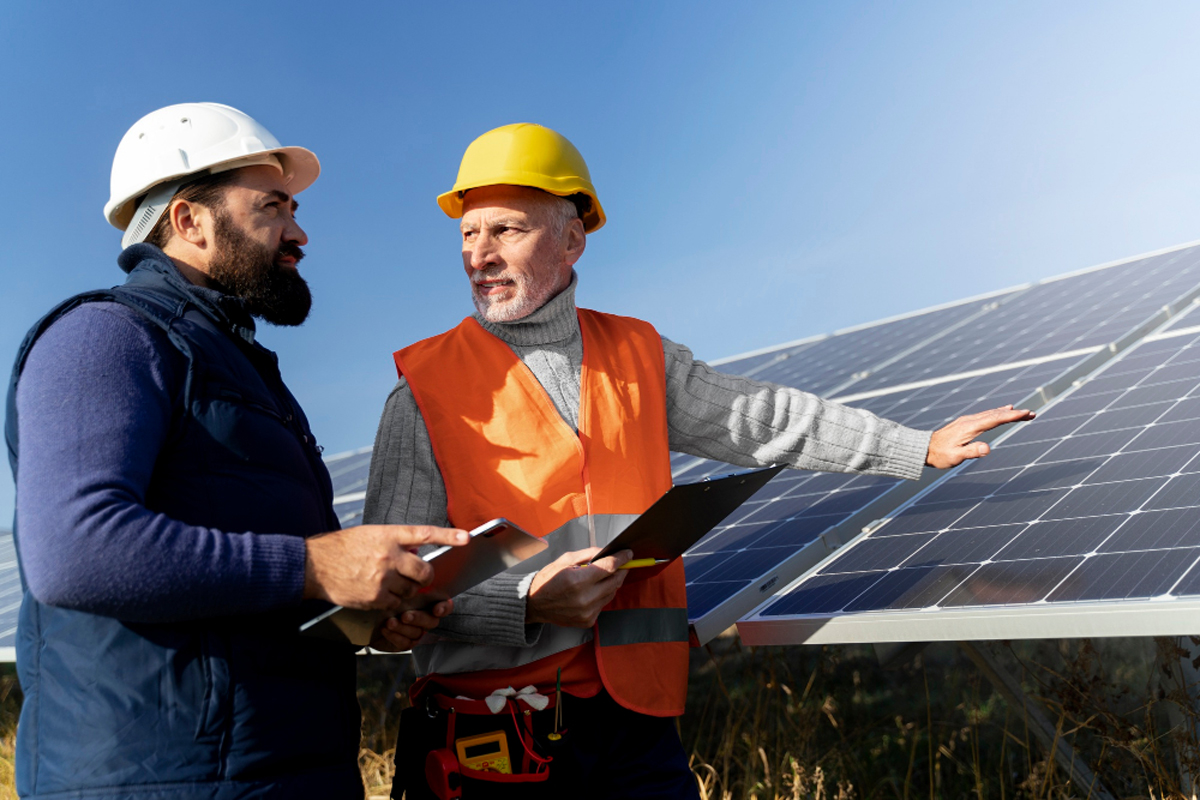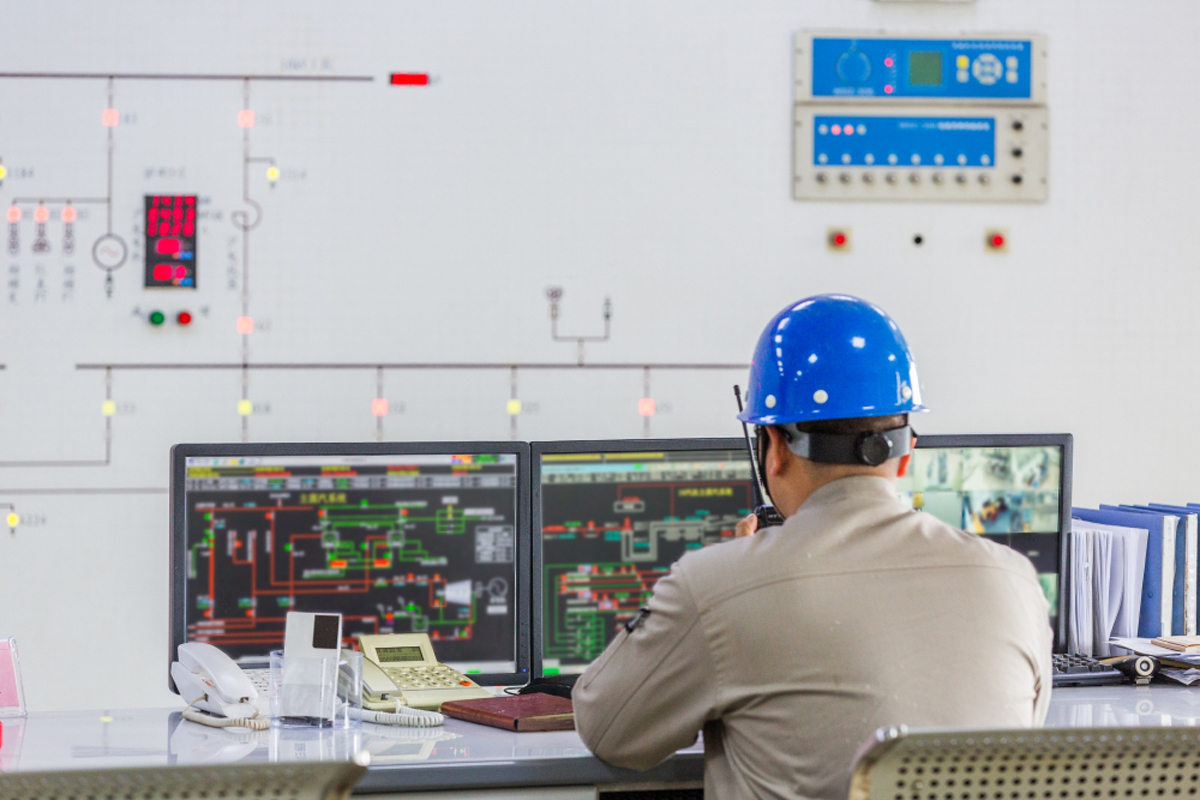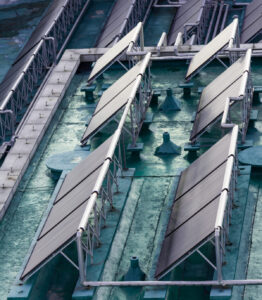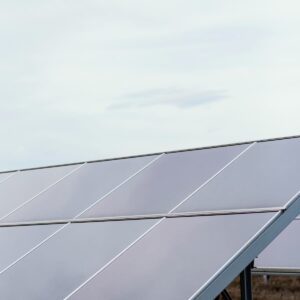Exclusive Neuroject Article: In an era marked by rapid technological advancement, no industry remains untouched by the transformative power of innovation – and the construction sector is no exception. The advent of smart technologies has taken the world by storm, and the construction industry is at the forefront of this digital revolution. Among these innovations, smart sensors have emerged as a significant game-changer, enhancing not just efficiency and safety, but also sustainability in the construction process.
In this comprehensive guide, we provide an in-depth exploration into the realm of smart sensors in Construction and their pivotal role in the construction industry. We start by demystifying what sensors tech are, taking you through the nuts and bolts of their operation, and how they differ from traditional sensors. We then transition into an overview of how these advanced tools are revolutionizing the construction sector, ushering in an era of unprecedented progress and efficiency.
This guide is not just for construction professionals seeking to understand and integrate these cutting-edge tools into their operations, but also for technology enthusiasts intrigued by the intersection of construction and digital innovation. Moreover, policymakers, educators, and students may find this guide useful in understanding the implications of these technologies for the future of construction and infrastructure development.
What is a Smart Sensor in Construction?
A smart sensor is a device that collects input from the environment, interprets and processes the data, and enables responsive action. It goes beyond the traditional sensor’s function of merely recording data by incorporating built-in computational and communication capabilities. They are “smart” because they interact with the environment and adapt to it, providing real-time, valuable feedback.
The distinguishing features of a smart sensor include its ability to analyze, interpret, and convert the acquired data into usable information. These sensors also have self-calibration and fault-detection functionalities, increasing reliability and reducing maintenance requirements. Additionally, they often possess wireless connectivity, enabling remote monitoring and control. The embedded intelligence of a smart sensor, therefore, offers a more advanced and dynamic method of data collection, analysis, and dissemination.
Smart Sensors in Construction play a pivotal role. For example, vibration sensors can detect movement within structures, thereby identifying potential stability issues. Temperature and humidity sensors help monitor environmental conditions that could affect construction materials’ integrity. This technology embedded in concrete can assess its strength and curing process, which is crucial for structural safety. Furthermore, sensors measuring air quality are essential for ensuring the well-being of construction workers.
Smart sensors aren’t limited to construction; they are used across various industries. In the automotive industry, they help with navigation, collision detection, and vehicle maintenance. The healthcare sector utilizes smart sensors for patient monitoring, drug delivery systems, and surgical assistance. In the agricultural industry, they aid in crop monitoring, irrigation control, and livestock management.
In essence, smart sensors bring about an enhanced level of awareness and control, influencing decision-making and improving operational efficiency. With the advent of the Internet of Things (IoT) and advancements in Artificial Intelligence (AI), the capabilities of these devices are continuously expanding, heralding a new era of digital transformation across industries.

The Importance of Smart Sensors in Construction
The integration of smart sensors and the Internet of Things (IoT) has had a profound impact on the construction industry, ushering in an era of unprecedented efficiency, safety, and quality. These cutting-edge tools have become indispensable, proving their worth in countless ways, and their influence continues to grow.
The utilization of this technology to enhance efficiency cannot be overstated. With real-time data on crucial variables such as temperature, pressure, and humidity, IoT devices and smart sensors empower construction companies to make informed decisions promptly. The ability to monitor conditions instantly and continuously has the potential to significantly reduce downtime, boost productivity, and consequently decrease overall project costs. Instead of solely focusing on corrective actions when issues arise, this technology enables construction sites to be monitored proactively, leveraging data to identify patterns and prevent problems. By doing so, valuable time and money are saved, leading to a more streamlined and efficient jobsite.
The benefits of smart sensors and IoT extend far into the realm of safety. Historically, construction sites have been notorious for their inherent hazards, ranking among the most dangerous workplaces. However, these advanced systems have the capacity to mitigate risks to a considerable extent. For instance, vibration sensors can detect early signs of structural instability, enabling preventative measures to be taken before any catastrophic failure occurs. Similarly, wearable sensors can continuously monitor workers’ vital health parameters, including heart rate and body temperature, promptly alerting supervisors if any abnormalities arise.

Suggested article for reading: What is IoT in Construction? Definition, Applications and Steps (2024)
Types of Smart Sensors in Construction
In the age of Industry 4.0, smart sensors play a pivotal role in the construction industry. These advanced devices offer a new paradigm of performance, safety, and efficiency in various applications. Let’s delve into the different types of smart sensors in Construction.
1. Structural Monitoring Sensors: These are essential for detecting changes in the physical conditions of structures, from bridges to skyscrapers. They monitor vibrations, deformations, and stresses, providing vital data for predictive maintenance. For example, piezoelectric sensors can measure dynamic pressure changes, while fiber optic sensors offer accurate strain measurements.
2. Environmental Sensors: These sensors provide real-time data on environmental conditions at the construction site. They track variables like temperature, humidity, wind speed, and air quality. Environmental sensors ensure that the construction activities are not adversely impacting the environment and provide a safer workspace. For instance, particulate matter sensors can detect airborne dust and pollutants.
3. Safety Sensors: These are designed to prevent accidents and injuries on construction sites. Examples include wearable sensors, which can monitor workers’ health and alert if there’s a risk of heatstroke or fatigue. Proximity sensors alert workers when they are near dangerous equipment or zones, while gas sensors detect harmful gases, preventing potential hazards.
4. Geotechnical Sensors: These help in monitoring the stability of soil and rock masses, essential for tunneling, excavation, and construction of foundations. Inclinometers and extensometers are often used in this category to track ground movements.
5. IoT-based Sensors: These are smart sensors connected via the Internet of Things. They can collate and transmit data to a centralized system, facilitating real-time monitoring and decision-making. An example could be an RFID (Radio Frequency Identification) sensor used for tracking equipment and materials.
6. Drones and LIDAR Sensors: These are used for surveying and mapping construction sites. Drones equipped with LIDAR sensors provide high-resolution 3D models of the construction area, aiding in precise planning and execution.
In conclusion, smart sensors for construction are revolutionizing the industry by enhancing safety, efficiency, and accuracy. Each type of sensor has specific applications, bringing us closer to an era of intelligent, responsive, and sustainable construction.
Applications of Smart Sensors in Construction
Smart sensors are the technological linchpin in modern construction, offering a range of applications that enhance safety, efficiency, and productivity.
1. Monitoring Structural Conditions: Sensors embedded within construction materials can detect changes in pressure, temperature, or vibrations, providing real-time data on the health of structures. This facilitates early identification of potential problems, reducing the risk of catastrophic failure.
2. Anomaly Detection: Beyond routine monitoring, smart sensors can identify anomalies that might indicate more serious structural issues. For example, changes in magnetic fields or electrical resistance could suggest hidden damage that requires immediate attention.
3. Resource Usage Monitoring: Smart sensors can track the usage of resources like water, electricity, or gas in real-time, providing actionable insights into consumption patterns and potential wastage.
4. Energy Efficiency: smart sensors, particularly in HVAC systems, can optimize the use of energy by adjusting temperature and lighting based on occupancy and ambient conditions. This not only reduces energy waste but also contributes to a more sustainable construction industry.
5. Safety Management: Construction sites often pose various hazards. Smart sensors can continuously monitor these potential risks, such as equipment health or gas leaks, and provide alerts to prevent accidents.
6. Accident Prevention: Smart sensors also play a key role in preventing accidents. They can monitor worker movements to ensure they remain in safe zones, reducing the likelihood of mishaps.
7. Worker Health Monitoring: Wearable sensors can track worker health parameters such as heart rate, body temperature, or fatigue levels, providing real-time feedback to supervisors and promoting worker safety.
8. Environmental Monitoring: Smart sensors can measure environmental conditions such as air quality, noise levels, and radiation exposure at construction sites, ensuring adherence to regulatory standards and worker safety.
Their applications are vast and continue to grow with advancements in technology, promising a more efficient and safer future for the construction industry.

Health and Safety
The construction industry has long been associated with inherent risks and hazards, resulting in tragic fatalities for workers. According to the Census of Fatal Occupational Injuries report from the Bureau of Labor Statistics, a staggering 937 construction worker deaths occurred in 2015 alone. However, there is hope for a safer future, thanks to the emergence of wearable sensors in the construction field.
Construction sites can now take proactive measures to prevent these unfortunate incidents by equipping their workers with wearable sensors. These sensors can easily be clipped onto workers’ belts and jackets, serving as an early warning system against potential dangers. They are designed to detect injuries, proximity to high voltage areas, exposure to harmful toxins, and even monitor vital bodily functions.
By continuously measuring a worker’s body temperature, perspiration levels, and heart rate, these sensors can quickly identify and alert when a worker is in immediate danger. This real-time information enables prompt intervention and medical assistance, significantly reducing the risk of severe injuries or fatalities. Furthermore, the sensors are also programmed to detect hazardous behaviors exhibited by workers, such as drowsiness or distraction, providing an additional layer of protection.
Moreover, the application of these sensors extends beyond safeguarding human lives. They can also contribute to the protection of the inanimate elements within a construction site. By monitoring and providing data on humidity spikes, water infiltration, and temperature changes, the sensors can help prevent potential damage to equipment, materials, and structures. With access to real-time environmental data, construction sites can proactively address risks, saving tens of thousands of dollars that would otherwise be spent on repairs or replacements.
Impacts of Smart Sensors in Construction
Smart sensors have significantly influenced the construction sector, shaping the way we plan, manage, and maintain structures. The impacts of these technological innovations are far-reaching and transformative.
1. Reduction of Maintenance Costs and Service Disruptions: Smart sensors have been instrumental in reducing maintenance costs and service disruptions. By continuously monitoring structural health, they can identify potential issues before they escalate into costly repairs or cause significant downtime. For example, sensors can detect early signs of wear and tear in machinery, allowing for timely maintenance and avoiding expensive equipment breakdowns. This predictive maintenance approach not only reduces costs but also minimizes service disruptions, leading to enhanced operational efficiency.
2. Improvement in Project Planning and Management: The use of these sensors has also improved project planning and management. By providing real-time data on various aspects of construction, these sensors facilitate informed decision-making and better project oversight. They can track resources, monitor progress, and even predict potential delays, thus allowing project managers to optimize workflows, allocate resources effectively, and maintain project timelines.
3. Risk Mitigation: Smart sensors play a crucial role in mitigating risks associated with construction projects. They can monitor a wide array of hazards, from equipment malfunctions to structural issues. For instance, sensors can detect gas leaks or abnormal vibrations, alerting supervisors to potential dangers and preventing accidents. This contributes to a safer working environment and reduces the risks of costly project setbacks.
4. Enhancement of Quality: Smart sensors also enhance the quality of construction. Through precise measurement and monitoring, they can ensure adherence to specifications and standards. They can detect deviations from design plans, monitor the quality of materials used, and even track the environmental conditions during construction. This ensures the built structures are of high quality, durable, and compliant with safety standards.
In conclusion, the impacts of smart sensors in construction are transformative, offering cost savings, improved project management, risk mitigation, and enhanced quality. As technology continues to advance, we can anticipate an even greater role for smart sensors in shaping the future of the construction industry.

Challenges and Considerations in Using Smart Sensors in Construction
This paragraph examines the complexities and obstacles in integrating smart sensors into the construction industry. It acknowledges that while these innovations bring significant benefits, their implementation is not without challenges.
One of the most common hurdles in implementing smart sensors in Construction is ensuring privacy and data security. These sensors collect vast amounts of data, some of which could be sensitive or proprietary. Ensuring this data is securely stored and transmitted is paramount, and failure to do so can lead to breaches that compromise privacy or intellectual property. Additionally, there are often legal and regulatory considerations around data handling that must be taken into account.
Another considerable challenge lies in the integration of these smart sensors with existing systems. Many construction sites operate on legacy systems and technologies that may not be immediately compatible with newer sensor technologies. Upgrading or replacing these systems can be costly and disruptive. Furthermore, achieving widespread adoption can be difficult, as it requires buy-in from all stakeholders, from site workers to top management.
Finally, the effective utilization of smart sensors requires substantial training and skills development. Construction workers and supervisors need to be trained not just on how to use the sensors, but also on how to interpret and act on the data they provide. Moreover, the industry must deal with a skills gap as it requires professionals who can manage and analyze large volumes of data and integrate it into the decision-making process.
In conclusion, while smart sensors in Construction hold great promise for the construction industry, their implementation must be thoughtfully managed. Dealing with these challenges requires a strategic approach, involving careful planning, robust training programs, secure data handling practices, and strong leadership to encourage adoption. By addressing these challenges head-on, the industry can fully harness the potential of smart sensors and transform construction for the better.
Conclusion
Here, we reflect upon the key points discussed in the article, proposing a forward-looking perspective for the use of smart sensors in the construction sector. Throughout the discussion, it became clear that smart sensors are proving to be indispensable tools in enhancing efficiency, safety, and sustainability in construction.
Smart sensors, with their real-time data collection and analysis capabilities, are revolutionizing the construction industry. They provide enhanced resource management, monitoring various aspects such as structural, environmental, and operational. This technology has led to improved workplace safety, with the ability to detect potential hazards and alert workers in real time.
Looking to the future, an even wider use of smart sensors in construction is predicted. Automation and artificial intelligence, fueled by the data provided by these sensors, will allow for more efficient project planning and management. New developments, such as sensors for structural health monitoring and those for workplace environment analysis, could become the standard in the industry.
However, the adoption of these innovative technologies requires a cultural shift in the construction industry. The importance of this change cannot be stressed enough: innovation is vital to remain competitive in an ever-evolving market. Companies must be ready to adopt these smart technologies, training their workers to use them and understand the advantages they can offer.
In conclusion, smart sensors represent an invaluable resource for the construction industry. With the adoption of these advanced technologies, the sector can expect greater efficiency, safety, and sustainability in the future. Innovation and the adoption of such technologies will be key to ongoing success in the construction industry.
Suggested article for reading:
Lean Construction Principles and Practical Examples
7 Important Construction Technology 2024
Resources:
For all the pictures: freepik





